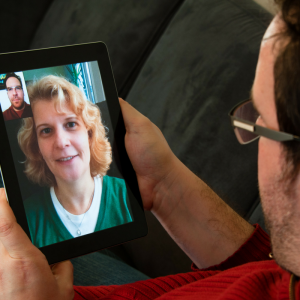
Good communication between patients and providers is the cornerstone of patient safety and satisfaction in the healthcare industry. However, achieving effective patient-provider communication can be difficult with the growing limited English proficiency (LEP) population in the United States. This population currently exceeds 25 million, up from 14 million in 1990 – a significant increase in less than three decades. In addition, it is estimated that 60 million people speak a language other than English at home, 95 million people have literacy levels below what is required to read and understand basic health instructions, and over 60% of hospitals report treating LEP patients every week.However, video remote interpretation (VRI) can bridge this communication gap. Here’s how:
The Importance of Meaningful Access to Healthcare Information
When Limited English Proficiency individuals seek medical attention, language barriers often hinder effective diagnosis and treatment. Studies have shown that the use of a professional interpreter in a healthcare setting reduces communication errors and can even reduce an LEP patient’s length of stay. These medically qualified interpreters can be accessed on-site, over the phone or via video platforms.
Currently, many institutions rely on either in-person or over-the-phone interpreters. Video remote interpretation (VRI) provides an optimal solution by combining the visual cues of in-person interpretation with the immediacy of phone interpretation. A virtual third party is brought in to facilitate communication between the healthcare provider and the LEP patient instantly and reliably. Essentially, VRI is instant, mobile and personal.
Creating A Comprehensive Language Access Plan
While on-site interpreting has been shown time and again to be the most effective form of interpretation, there are physical limitations to having a live, in-person interpreter when needed. Travel time from the agency to the hospital must be taken into account, as well as the travel time between rooms and departments. The logistics of providing on-site interpretation is challenging, and when an LEP patient needs immediate care, the timeliness of video remote interpretation greatly outweighs the benefits of having an on-site interpreter physically present.
The most effective language access plan incorporates all three modes of interpretation, allowing for more scheduling flexibility, the option to use each mode for situations in which they are most appropriate, and access to a wider range of languages.
The Role of Video Remote Interpretation
VRI is an effective language barrier solution for a number of reasons:
- It is instant, mobile and cost-effective. Highly skilled American Sign Language (ASL) and language interpreters can be reached over advanced video technology on demand at an affordable cost.
- Video remote interpreters have extensive training in medical terminology, cultural competency and the interpreter code of ethics.
- It increases interpreter productivity by eliminating travel time and cost.
- In an emergency situation, it can be particularly valuable when a medically qualified interpreter in the language needed is not immediately available.
- It is particularly effective for conversations that rely on nonverbal cues and eliminates the potential for conflicting communications, which increases in significance when the growing population of LEP individuals is taken into consideration. With VRI, medically qualified interpreters can clearly see the patient, taking into account body language and physical cues.
Video remote interpreting has proven to be an extremely powerful language barrier solution for the healthcare industry, as it effectively combines the benefits of both on-site and over-the-phone interpreting (OPI). With VRI, a qualified medical interpreter can be reached in a timely manner without sacrificing the visual cues of an onsite interpreter. And VRI’s advantages do not end with improved communication – it is also an economically sound decision because, on average, hospitals save a significant amount in interpretation costs. With the LEP population projected to rise, it is essential for healthcare providers to have a comprehensive language access plan in place – and VRI just may be the ideal solution.
____________________________________________________________

Author: David Fetterolf
Bio: David leads the overall strategic direction of Stratus Video’s Language Services division. David brings over 26 years of experience working for healthcare information technology and service companies. Prior to joining Stratus Video, he was president and founder of MDeverywhere, revenue cycle management software tailored to the healthcare industry. In 2011 MDeverywhere made the coveted Inc. 500/5000 fastest growing companies list. Prior to MDeverywhere, David was a division president for Datamedic, a leading provider of computer-based patient records and business management software and services for medical practices and clinics. As division president, he was responsible for strategy and financial performance, which included leading the marketing, sales, implementation, support, and manufacturing and development teams. David has a Bachelor’s degree in Electrical Engineering from Cornell University and a Masters of Business Administration from The Wharton School at the University of Pennsylvania.
